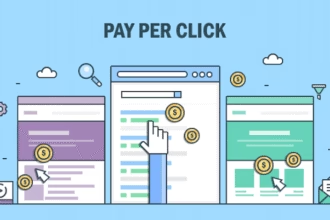In this post, you will learn how to create a lead magnet that truly works. In today’s noisy digital world, people are not just looking for products. They’re looking for value. If you want to grow your audience, gain trust, and attract serious buyers, you need to create a lead magnet.
This is not just about giving away a freebie. It’s about offering something so helpful and so targeted that your ideal customers can’t ignore it.
In 2025, attention is currency. And if you want that attention, your lead magnet has to be smart, useful, and clear.
Let’s break it all down in very simple terms.
What is a lead magnet?
A lead magnet is something valuable you give to people in exchange for their contact information, usually their email. Think of it like a trade. You give something useful for free, and they give you permission to talk to them later.
This “free thing” can be a PDF, checklist, ebook, video, discount code, free trial, or anything your ideal buyer wants badly enough to sign up for.
The goal? To turn a stranger into a potential buyer by starting a relationship built on value.
Why lead magnets still matter in 2025
Many people say email is dead. That’s not true. Email is still one of the most powerful ways to sell online. But to get someone’s email in 2025, you need to earn it. That’s why knowing how to create a lead magnet is more important than ever.
People get bombarded with ads, newsletters, and spam daily. If you want someone to pay attention to your emails, your lead magnet needs to solve a real problem. It should feel like a shortcut or a secret weapon for something they truly care about.
Before you create a lead magnet, Know who you’re talking to
You can’t make a good lead magnet for “everyone.” You need to focus on your ideal buyer.
Ask yourself:
- What does your perfect customer struggle with?
- What quick win can you offer them?
- What do they want more of? Time? Money? Clarity? Beauty? Peace?
When you truly understand your audience’s pain points and dreams, it becomes much easier to create a lead magnet they actually want.
What makes a good lead magnet?
There are many free things on the internet. Most of them go ignored. To stand out, your lead magnet must do at least three things:
- Solve a specific problem
- Offer instant value
- Lead naturally to your paid offer
For example, if you’re selling a course on how to start a podcast, your lead magnet could be “The 5-Step Podcast Launch Checklist.” It’s specific, quick to read, and makes the reader want more help.
Remember: when you create a lead magnet, don’t try to give them everything. Give them just enough to get a result and build trust.
How to create a lead magnet that attracts buyers
Let’s now go step by step to create a lead magnet that doesn’t just collect emails, but brings in buyers.
Step 1: Choose the right format
There’s no one-size-fits-all. The best format depends on your audience and what you sell. Here are some proven formats in 2025:
- PDF checklists: Simple, visual, and fast to consume
- Mini ebooks: Great for experts and educators
- Free templates: Very popular for designers, marketers, and business owners
- Discount codes or free trials: Perfect for ecommerce or SaaS
- Email courses: Let you build trust over several days
- Webinars or free training: Best for service-based businesses
Don’t overthink it. Pick the format your audience will find easiest to use. If you’re not sure, start small. A checklist or a one-page guide is a great way to begin.
Step 2: Make your title irresistible
The title is everything. It should grab attention and explain the benefit in 1 sentence.
Here’s a formula you can use: [Result] in [Time] without [Pain]
Examples:
- “Get 10 New Clients in 30 Days Without Running Ads”
- “The Beginner’s Guide to Meal Planning in 15 Minutes a Week”
- “3 Email Templates to Land Freelance Clients Fast”
When you create a lead magnet, don’t name it something boring like “Newsletter Signup.” Nobody wants more emails. But they do want results.
Also Read: Marketing Strategies Every Creative Startup Should Use in 2025
Step 3: Design it clean and simple
Your lead magnet doesn’t need to look like a $10,000 design. But it should be easy to read and visually clean.
Use:
- Clear headers
- Bullet points or short paragraphs
- Visuals if needed (e.g., charts or screenshots)
- Big buttons and simple colors
If it’s a PDF, tools like Canva or Google Docs work fine. If it’s an email course, just focus on clarity and tone.
The easier it is to read and use, the better results you’ll get.
Also Read:
Step 4: Connect it to your offer
This is where most people fail. They create a lead magnet that’s useful, but it leads nowhere.
To avoid that mistake, make sure your lead magnet is connected to your main product or service.
Example:
- You sell skincare products? Offer a guide on “5 Steps to Clear Skin Without Expensive Treatments.”
- You offer real estate services? Create a lead magnet like “The 10 Mistakes First-Time Homebuyers Make (And How to Avoid Them).”
When your lead magnet lines up with your offer, people will naturally want more from you. You won’t need to “hard sell”, they’ll ask what’s next.
Where to put your lead magnet
Once you create a lead magnet, where should you share it?
Here are a few ideas:
- Add it to your website homepage or a popup
- Share it on your Instagram bio link
- Use it as a call to action at the end of your blog posts
- Promote it in Facebook Groups or Twitter threads
- Run ads to it if you have the budget
Wherever your ideal buyer hangs out, put your lead magnet there.
Measure what matters
Creating a lead magnet is just the beginning. You need to track how well it performs.
Here’s what to look at:
- How many people are signing up?
- How many actually open your emails?
- How many click through to your offers?
- Are they buying?
These numbers will show if your lead magnet is attracting the right people, or just collecting emails that go nowhere.
If the numbers are low, tweak the title, the landing page, or the follow-up emails. Always test and improve.
Lead magnet trends in 2025
Let’s take a look at what’s working now and what’s coming next when it comes to how people create a lead magnet in 2025.
- Interactive lead magnets: Think quizzes, calculators, or “build-your-own-plan” tools.
- AI-personalized content: Some creators use AI to generate custom reports or guides based on user input.
- Short-form video magnets: A 5-minute training video can build trust faster than a long PDF.
- Voice notes and podcasts: Some brands are testing audio lead magnets, which feel more personal.
You don’t need to follow all trends. But stay updated on what your audience prefers.
Common mistakes to avoid
Here are things NOT to do when you create a lead magnet:
- Don’t make it too long or too basic
- Don’t make it about you, make it about the user’s problem
- Don’t ask for too much info (Name + Email is enough)
- Don’t forget to follow up with a solid welcome email or sequence
The lead magnet is only the first step. The real power is in what happens next.
Don’t Miss: The Ultimate Guide to Client Retention in the Digital Age
The future belongs to value-givers
If you want to grow a real business in 2025, you need to create a lead magnet that speaks directly to your ideal buyer’s needs.
Don’t make it fancy. Make it useful.
Don’t make it broad. Make it focused.
When done right, your lead magnet becomes the doorway to trust, to sales, and to long-term relationships.
It’s not just about building a list. It’s about building a buyer-ready list.
So, start today. Pick a format, solve one problem, and create a lead magnet that makes your ideal customer say, “Wow, I needed this.”





